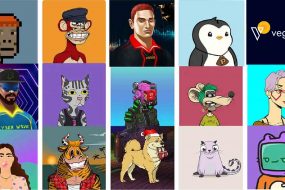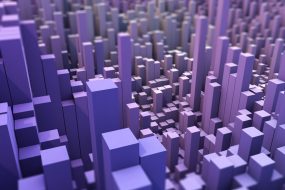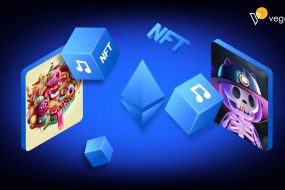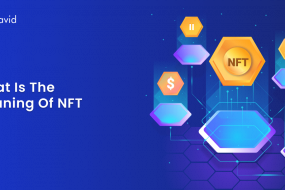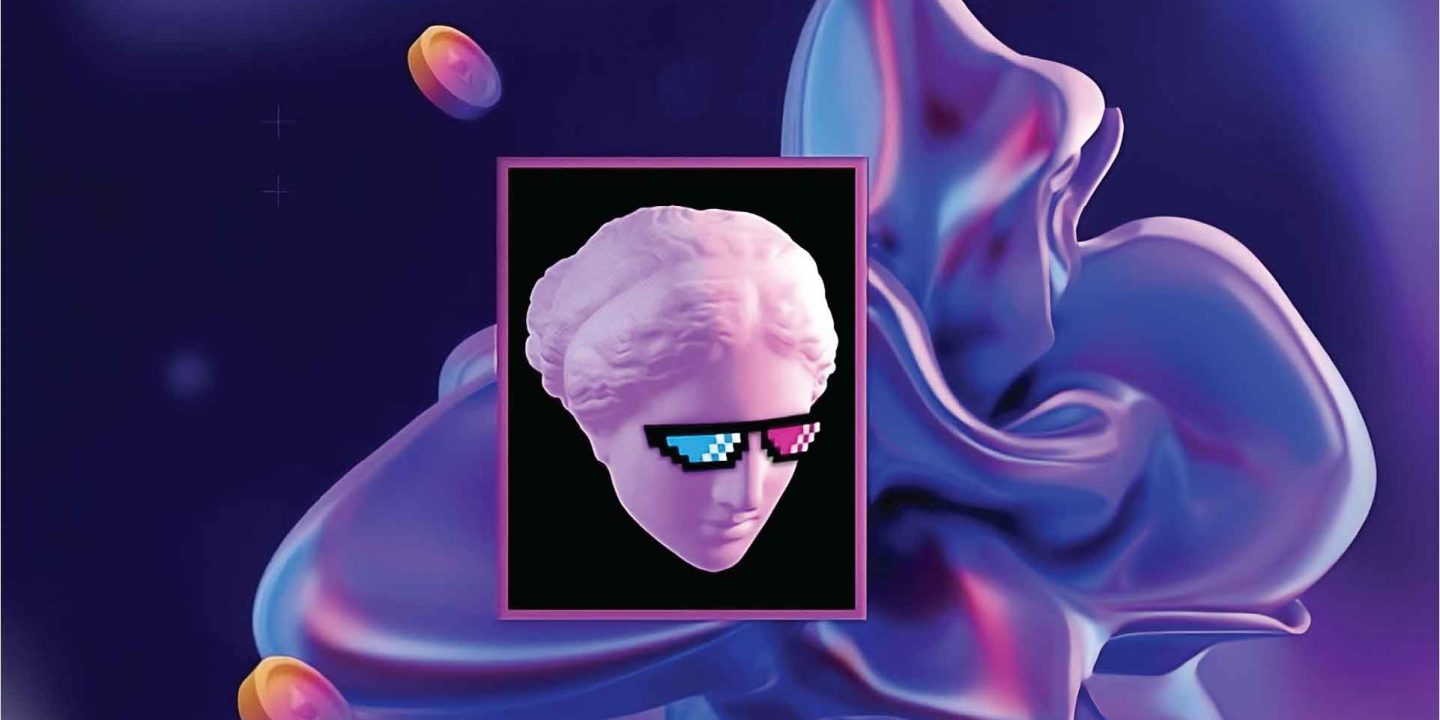
The concept of NFTs has opened up new possibilities for artists to monetize their work and connect directly with collectors. While early NFTs have largely been static images, dynamic NFTs that update based on programmed rules are now emerging. Dynamic NFTs give artists even more creative freedom and opportunities to explore the relationship between digital assets and the real world. This blog will explore how dynamic NFTs are creating new possibilities for artists and collectors.
Concept of dynamic NFTs
Most NFTs today are static digital assets – they have a fixed form and do not change over time. However, dynamic NFTs offer the ability for NFT assets to evolve and change, unlocking new utility and use cases.
A dynamic NFT is an NFT that is programmed to modify or upgrade itself over time based on certain conditions. The core asset linked to the NFT may gain new properties, visual effects, traits, content, or utilities as it “levels up”. This leveling up could be tied to real-world events, owner actions, or the passage of time.
For example, a dynamic NFT collectible may gain new attributes, rarity scores, and appearances every month. An NFT song or image file linked to the token may get additional verses or frames added to it over the years. An NFT gaming asset may level up with experience points to provide new abilities in-game.
Creating dynamic NFTs requires programming smart contracts with code that modifies the core NFT asset over time in self-executing ways. The conditions and mechanisms for evolution are predefined but then occur automatically according to the programmed logic.
How dynamic NFTs differ from traditional static NFTs
Traditional NFTs are static digital assets that have a fixed form and do not change over time. In contrast, dynamic NFTs are NFTs that are programmed to modify or upgrade themselves based on certain conditions. There are several key ways in which dynamic NFTs differ from static NFTs:
- Dynamic NFTs can evolve and level up. The core asset linked to a dynamic NFT may gain new properties, visual effects, traits, or content as it “levels up” according to programmed rules. Static NFTs remain unchanged once minted.
- Dynamic NFT evolutions are rule-based. Dynamic NFTs modify themselves according to predetermined conditions coded into their smart contracts. These could be based on periods, owner actions, external events, or other programmed logic. Static NFTs do not have any evolution rules.
- Dynamic NFTs offer ongoing utility. As dynamic NFTs level up and gain new traits, they continue providing updated utility to their owners over time. Static NFTs offer a single, fixed utility upon minting.
- Dynamic NFTs can be gamified. The concept of leveling up aligns well with concepts of gameplay and gamification. Static NFTs do not offer these game mechanics.
- Dynamic NFT value may increase over time. As dynamic NFTs evolve, early versions could become scarcer and more valuable. Static NFT value is based solely on their original form.
- Dynamic NFTs require complex coding. Their creation involves smart contract programming to define the modification rules. Static NFTs utilize simpler smart contracts.
Empowering Artists through Dynamic NFTs
Dynamic NFTs have the potential to empower artists by giving them more ownership and control over their work in the digital world. Traditional static NFTs offer artists a single, fixed representation of their art at the time of minting. However, artists’ visions often evolve and expand over time. Dynamic NFTs allow artists’ work to grow and change along with their creative expressions.
Dynamic NFTs could enable artists to program their art to develop according to their long-term visions. Artists could add new layers, imagery, or meanings to their work as it “levels up” under predefined conditions. This gives artists more flexibility and autonomy in representing their creative visions over the lifespan of their work.
Artists could tie evolutions within dynamic NFTs to real-world milestones or movements important to them. The art could reflect broader social, cultural, or political shifts that inspire the artists’ perspectives. This gives artists’ works the ability to become more relevant and resonant over time.
Artists could share revenues from dynamic NFTs with their original collectors as the works evolve and potentially appreciate value. This helps ensure artists are fairly compensated for the ongoing dimensions they bring to their creative outputs.
Artists would retain more ownership and royalties over their work in the long run compared to traditional models where art is often sold once and then retained by collectors. Dynamic NFTs allow art ownership to remain partially with artists even after the initial sale.
Creating New Avenues for Collectors
Dynamic NFTs have the potential to create new and exciting avenues for NFT collectors. Traditional static NFTs provide collectors with a single, fixed digital asset at the time of purchase. However, dynamic NFTs that evolve and change over time could unlock new values and utilities for collectors.
Collectors of dynamic NFTs may benefit from the potential appreciation of early versions. As dynamic NFTs level up and new variants are created, the earliest versions could become scarcer and more valuable. This allows collectors to potentially profit from holding NFTs that evolve.
Collectors may receive new or upgraded content as NFTs they hold dynamically level up. Dynamic NFTs tied to media like songs, videos, or images could provide collectors with additional verses, frames, or features as they evolve. This offers collectors ongoing utility from NFTs that traditionally only have value at the point of purchase.
Collectors may receive a share of revenues from any future evolutions of the NFTs they initially purchase. Since artists often retain licensing rights over dynamic NFTs they create, they may agree to share a portion of future revenues with early collectors as the works level up. This acts as a potential residual income stream for interested collectors.
Technological Advancements and Challenges
Dynamic NFTs represent an emerging innovation within the NFT space that utilizes new techniques of smart contract programming. Several technological advancements have enabled the creation of dynamic NFTs:
- Upgradable smart contracts – Dynamic NFTs require the use of upgradable smart contracts that can be modified after deployment. Traditional smart contracts are static and immutable. Newer techniques allow contracts to be upgraded according to predefined rules.
- Complex programmability – Dynamic NFT smart contracts must be coded with complex logic to define the conditions, triggers, and mechanisms for how the linked assets will evolve. This requires more sophisticated programming compared to traditional NFT smart contracts.
- Improvements in blockchain scalability – For dynamic NFTs to gain mainstream adoption, the underlying blockchains will need to process high transaction volumes from evolving NFT assets efficiently. Improved scalability solutions will be required to support dynamic NFT use cases at scale.
However, several technological challenges still exist with dynamic NFTs:
- Bugs in smart contract code – Since dynamic NFTs rely on complex upgradable smart contracts, there is an elevated risk of bugs in the code or unintended behaviors. Smart contracts are difficult to patch after deployment.
- Security risks – Dynamic NFT smart contracts represent a new and relatively untested application of programmable blockchain technology. They could potentially contain new security loopholes that have not yet been discovered.
- Higher costs – The complex smart contracts and transactions required to manage dynamic NFTs may incur higher costs for creators and users compared to traditional NFTs.
- Unproven stability – The concept of dynamic NFTs is still novel and largely unproven at scale. The long-term stability and reliability of upgradable smart contracts supporting dynamic NFTs remains to be seen.
Real-world Use Cases
Dynamic NFTs allow the data associated with an NFT to change over time based on programmable rules. They have several exciting use cases beyond just static profile pictures and collectibles.
- Gaming applications like in-game items could function as dynamic NFTs, leveling up and evolving as the player progresses. For example, a weapon NFT may gain more power and rarity the more enemies it destroys. This allows players to truly own their in-game items.
- Ticketing is another potential use case. Concert or sporting event tickets can be issued as dynamic NFTs that update with seat information, price changes, and status (canceled, postponed, etc). This provides a tamper-proof record for both sellers and buyers.
- Real estate deeds could transition to dynamic NFTs, updating automatically when ownership changes hands or property tax bills are issued and paid. This creates an immutable record of ownership history and payments.
In summary, dynamic NFTs allow for a new level of programmable assets that can evolve based on real-world events and user behaviors, unlocking novel applications beyond the initial concept of static crypto collectibles.
Future Implications and Possibilities
Dynamic NFTs that evolve based on programmed rules and real-world data have the potential to transform many industries in the years ahead. They represent an approach to digital assets that can autonomously adapt to match real-world events and systems. Some possible implications:
- Interoperability – Dynamic NFTs issued by different organizations could share data and trigger rules between each other, creating a more interconnected metaverse of digital assets. This could enable complex applications spanning multiple platforms.
- Autonomous Organizations – Dynamic NFTs could power completely autonomous organizations that are programmed to manage themselves and their assets according to set rules. Corporate structures and even governments could become fully algorithmic.
- DeFi Applications – In addition to increasing the functionality of NFT-based collateral, dynamic NFTs could unlock entirely new forms of DeFi applications by incorporating real-time data to autonomously accrue value, distribute yields, and manage risk.
- Supply Chain Management – Dynamic supply chain tokens that represent physical goods could evolve to reflect locations, conditions, ownership, and other factors throughout the entire lifecycle from production to retail sales. This could improve traceability, reduce fraud and automate payments.
- Credentialing – Important credentials like academic degrees, professional certifications, ID cards, and health records could be issued as dynamic NFTs that automatically update in real-time to reflect the latest information. This would reduce costs while increasing trust and transparency.
Conclusion
In conclusion, while still in their early stages, dynamic NFTs have the potential to be a major leap forward for artists, collectors, and the entire NFT ecosystem. They allow for an unprecedented level of interactivity, programmability, and flexibility that static NFTs cannot achieve. Dynamic NFT artworks could react to real-world events, the owner’s actions, other NFTs, and more. Collectors would have dynamically evolving pieces that are never the same twice. This likely heralds a new era of experimentation and creativity for artists exploring the boundaries between digital and physical art. Dynamic NFTs may become a core part of how artists conceive, distribute and monetize their work in the years ahead. As both artists and collectors become more comfortable with the concept, we will likely see some truly revolutionary dynamic art being created that pushes the envelope of what an NFT – and art itself – can be.








